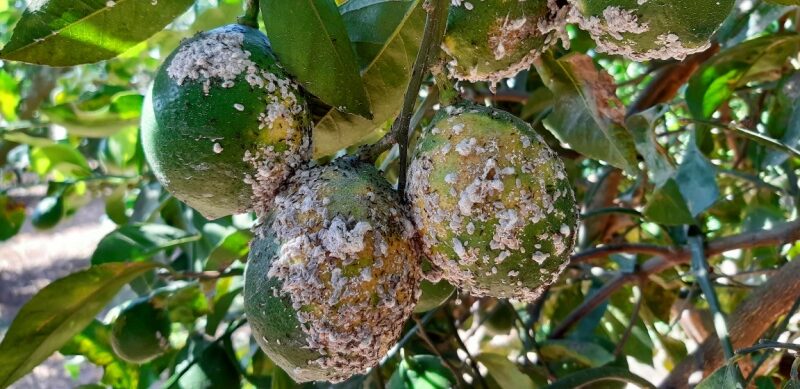Are Pests Feeding on Your Fruit Trees This Winter?

Winter may seem like a quiet season for your garden, but it can be a prime time for pests to target your fruit trees. As temperatures drop and food becomes scarce, certain pests look to overwinter on or around your trees, feeding on bark, roots, or the remaining fruit. If you're concerned about your fruit trees, it’s important to stay vigilant during the colder months to prevent pests from causing damage.
Common Winter Pests for Fruit Trees
Several pests are known to cause issues for fruit trees during the winter. These pests can weaken your trees, affecting their ability to produce healthy fruit come spring. Here are some of the most common winter pests to watch out for:
1. Scale Insects
Scale insects are small, sap-sucking pests that attach themselves to the branches and trunks of fruit trees. They can cause damage by draining the tree's nutrients, which can lead to stunted growth and reduced fruit production.
2. Aphids
While aphids are more active in warmer months, certain species overwinter on fruit trees, laying eggs on the bark and branches. These eggs hatch in the spring, leading to infestations that can damage new buds and leaves.
3. Spider Mites
Spider mites can also overwinter on fruit trees, particularly in dry, sheltered areas. These tiny pests feed on plant sap, which can cause yellowing leaves and reduced fruit quality.
4. Rodents
Mice, voles, and other rodents may gnaw on the bark of fruit trees during the winter months. This can cause girdling, where the bark is stripped around the base of the tree, cutting off the tree’s nutrient supply and potentially killing it.
Signs That Pests Are Targeting Your Trees
Winter pests can be sneaky, and it’s not always easy to spot the signs of an infestation. However, there are a few telltale signs that pests may be feeding on your fruit trees:
- Bark Damage: If you notice small holes, chewed bark, or sawdust-like material at the base of your tree, this could be a sign of insect or rodent activity.
- Egg Masses: Look for small, white or yellow egg masses on the bark of your trees. These could belong to aphids or scale insects.
- Weakened Branches: If branches appear brittle, stunted, or show signs of wilting, pests may be feeding on the tree’s sap or roots.
How to Protect Your Fruit Trees from Winter Pests
Taking steps to protect your fruit trees during the winter can help prevent pest damage and ensure a healthy growing season in the spring. Here are some effective ways to keep pests at bay:
- Dormant Oil Sprays: Applying dormant oil sprays to your fruit trees can help control overwintering pests like aphids and scale insects. These oils suffocate the pests and their eggs without harming the tree. Be sure to apply the spray during late winter, when the tree is dormant but before buds start to swell.
- Tree Wraps: To protect your trees from rodents, consider using tree wraps around the base of the trunk. These barriers prevent animals from chewing on the bark and causing girdling.
- Prune Dead or Diseased Branches: Pruning your fruit trees during the winter helps remove potential hiding spots for pests and promotes healthy growth. Be sure to clean your pruning tools between cuts to avoid spreading any diseases.
- Clean Up Debris: Pests often hide in fallen leaves, fruit, and branches. Clean up any debris around your fruit trees to eliminate potential shelter for pests.
- Monitor Regularly: Even in winter, it’s important to check your trees for signs of pests. Early detection is key to preventing an infestation from getting out of control.
By staying proactive during the winter months, you can protect your fruit trees from pests and set the stage for a bountiful harvest in the coming year. And, by getting professional help from the pros at The Experienced Gardner, you can rest assured that all of your trees and lawn are protected from threats.


